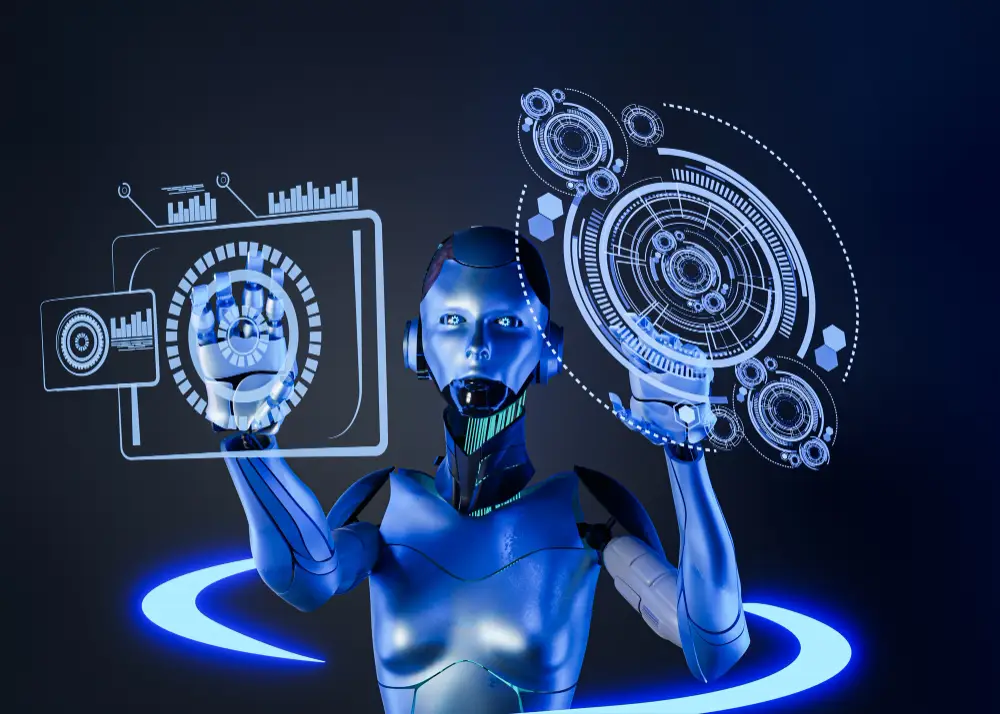Machine learning (ML) is the most promising area of artificial intelligence. According to the MIPT analytical almanac, one of the main events in the field of artificial intelligence in the world in 2021 is the statement of scientists from Stanford about the formation of a new paradigm in the field of ML: large corporations will create giant models that other companies will further train and use to solve their problems.
What is machine learning?
Machine learning is a field of applied mathematics that allows computer models to be trained to identify common patterns in data. Based on many examples, machine learning models independently learn to distinguish between received information and use it to solve problems. Machine learning is qualitatively different from deterministic algorithms, which include a fixed set of predefined steps. Machine learning is now a rapidly growing industry. This is due to an increase in computing power and the accumulation of knowledge, the emergence of a set of scientifically sound and practical approaches.

Machine learning is a field that studies and applies models that learn from input data. It is one of the areas of artificial intelligence.
Neural networks are one of a family of machine learning models.
Artificial intelligence is a group of methods that use various algorithms, including those based on machine learning, to create intelligent machines. Strong artificial intelligence is capable of solving everyday human problems. In contrast, weak artificial intelligence can perform only narrowly focused tasks, for example, distinguishing between various objects and combining similar images into groups. When working with such models, a person transfers part of his knowledge to them, thereby speeding up his work.
Main directions in machine learning
Supervised learning
Labeled data is used for analysis; all objects are pre-labeled. For example, photographs of cats and dogs with appropriate labels are presented to train the model. The task is to learn to distinguish these animals.
Unsupervised learning
When processing arrays of information, there is no description or labels of objects; the algorithm must independently identify patterns, relationships, and dependencies in the data. Unsupervised learning is used to search for similar texts, images and documents, visualize and detect anomalies.
Reinforcement learning
The machine seeks the best actions to perform the task in different conditions. For example, a model spaceship is landing. Adapting the mode of action is necessary based on information about the changing environment. Optimized steps are the learning outcome.
What problems does machine learning solve?
Machine learning helps in solving economic and socially significant problems. The main classes of problems solved using machine learning:
- Regression is the prediction of a numerical value based on a sample of objects with different features. For example, an assessment of the borrower’s solvency, the company’s expected income, or the price of an apartment on the real estate market.
- Classification is the assignment of objects based on existing parameters to one of the predefined classes. As part of the Center for the Study and Network Monitoring of Youth’s work, qualitative classification helps identify destructive content among text or visual objects. More than a million images and texts are analyzed every day thanks to machine learning.
- Clustering – combining similar data into groups (clusters) and searching for communities with similar content or connecting similar posts on a social network.
- Time series forecasting works with data obtained in a certain period of time and, based on it, predicts values in a given period under study. Solving this problem makes it possible to predict seismic activity or changes in the value of securities.
Some auxiliary tasks can be solved using machine learning – text recognition in images, character detection, speech identification, etc.
Machine learning and data analysis
According to Konstantin Vorontsov, Doctor of Physical and Mathematical Sciences, professor at MIPT, and specialist in machine learning, data mining is generally based on machine learning approaches and methods. ML deals with constructing mathematical models for summarizing information, and data analysis as an applied discipline allows for solving specific practical problems. Models help to explore and process gigantic flows of information and identify patterns.
In what areas is machine learning used?
Machine learning is actively used in many sectors of the economy. For example, business models are widely used to predict customer behavior, create recommendation systems, and cluster audiences to customize advertising displays (grouping people into groups based on similar interests, age, or social status).
For example, a method such as time series analysis is necessary for a deep understanding of ongoing business processes, particularly the dynamics of purchases and sales of goods, website traffic and user coverage.
In medicine, machine learning helps analyze data from various patient health status studies. Smart systems based on ML can identify pathologies using an X-ray image or predict the likelihood of having a disease based on a set of test results.
In industry, process automation is being implemented using machine learning models. This allows you to reduce production costs and increase productivity.
In agriculture, the first unmanned harvesters were launched using machine learning approaches. The autopilot helps control the transport while the combined operator monitors the harvesting process.
ML also enables security in the real world and digital space. For example, machine learning helps to automatically identify fraudulent transactions among numerous banking transactions, control a given perimeter, and use biometric recognition systems.
Machine learning is widely used within the Center for the Study and Network Monitoring of Youth. The digital space is a continuously updated environment, replenished with useful, neutral, and destructive content every second.
To monitor and analyze negative phenomena on the Internet, the Center’s specialists develop or adapt existing machine learning models. ML greatly simplifies the search for potentially dangerous information for users among large amounts of network data.
Prospects for developing machine learning: Will artificial intelligence be smarter than humans?
Machine learning in the future will free people from performing routine operations and make their work more efficient. This will make life easier and computers even smarter. Despite great advances in artificial intelligence, modern machine learning, and other approaches cannot yet replace human intelligence. Models are engaged in statistical generalization of the properties of objects.
Still, in addition to general characteristics, some features can only be determined by manual analysis. This is the only opportunity to identify single (unique) features and recognize complex objects and new phenomena.
Machine learning has great prospects, and investment in ML is constantly growing. These technologies will change the world, like the invention of semiconductors or the laser once changed it. Today, the research community and engineers strive to make everyday life easier with machine learning and expand the horizons of human knowledge.


